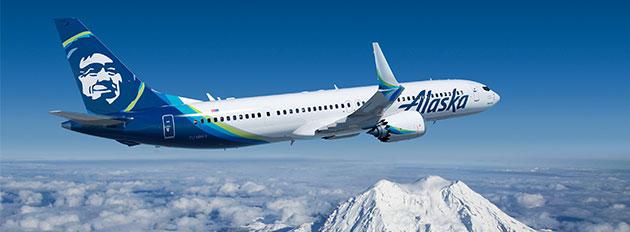Boeing 737-9 MAX
An updated version of the world's most-flown aircraft, the Boeing 737-9 MAX features new fuel-efficient engines, which allow us to fly further and quieter––all while reducing carbon emissions. The 737-9 MAX Series is Boeing's newest family of single-aisle airplanes. Equipped with 178 of our newly designed leather Recaro seats, our 737-9 MAX will feature Boeing's award-winning Sky Interior, which gives the cabin a spacious feeling along with ambient mood lighting. Also on board: redesigned First Class seats with footrests, new cup holders in First and Premium Class, ergonomically-designed tablet holders, and a shelf designed to hold most tablets and smartphones in every seat. The aircraft will also include power outlets for charging laptops and smartphones, inflight internet service, and Entretenimiento durante el vuelo.
Inflight Wi-Fi: Please be aware that our 737-9 MAX fleet will not be delivered with Wi-Fi. We're in the process of adding Wi-Fi to these airplanes however some will fly without Wi-Fi for a period of time. Inflight movies will be available though. Gracias.

Especificaciones
- Crew: 2 Pilots, 4 Azafatas
- First Class: 16
- Alcance: 3,250 millas náuticas
- Premium Class: 24
- Longitud: 138 pies, 2 plg (42.1 m)
- Coach: 138
- Velocidad de Crucero: 530 mph (853 km/h)
- Dimensión: (with winglets) 117 ft, 10 in (35.9 m)
- Altitud Máx de Crucero: 41,000 pies (12,497 m)
-
Comodidades destacadas:
- Asientos: Ancho de los asientos del avión
Interior seating layout of our Boeing 737-9 MAX aircraft


